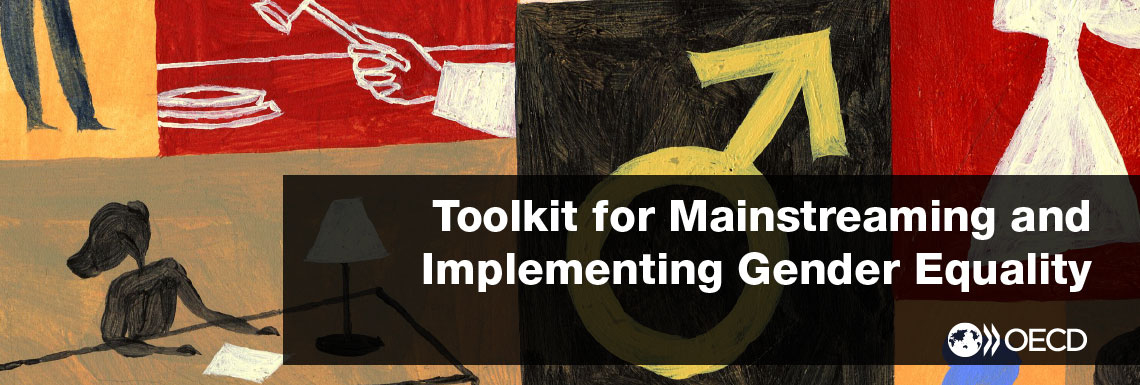Gender-disaggregated data and information is available and used to inform gender analysis
SELF-ASSESSMENT QUESTION
- Do national and subnational institutions regularly collect gender disaggregated data?
- Is there a centralized system where national and sub-national data – including gender-sensitive data – are stored and accessible?
- Are consultations with the public (NGOs, women’s groups, etc) regularly implemented to collect data and information about the potential or actual impact of government policies, programs and budgets?
- Are other Gender Analysis tools available/utilized (i.e. desk review, household interview, focus group discussion, semi-structured interviews, direct observation, case study, stakeholder workshop, trend analysis, etc).
WHY IS IT IMPORTANT?
Gender-differentiated data and information must be available for policy makers to be able to assess the situation and develop appropriate, evidence-based responses and policies. Such data must be collected and analysed within the policy-making process, ideally covering several years to track changes and take corrective action. Civil society organizations, including NGOs and women’s groups, can be precious allies in gathering information about the potential or actual impact of government policies, and they should be consulted regularly. Surveys, interviews, reviews, opinion polls and benchmarking are also effective methods for obtaining and analysing data on diversity policies, as well as desk review, household interviews, focus group discussion. Finally, building public servants’ awareness and expertise through information campaigns and training is also important.
ACTIONS TO CONSIDER
- Sex-disaggregated and gender-sensitive data are available and accessible at national and sub-national level;
- The government regularly activates public consultation processes on gender to collect missing information;
- Build the awareness of statisticians and representatives of line ministries of gender issues through information campaigns and trainings.
PITFALLS TO AVOID
- Sex-disaggregated and gender-sensitive data are “women only” focused;
- Sex-disaggregated and gender-sensitive data are obtained without any consultation with civil society organizations;
- Insufficient resources, limited capacity in ministries and statistical offices to define the need for gender-disaggregated data and integrate gender perspectives into mainstream indicators and data collection efforts.
COUNTRY EXAMPLES
Norway
Since 2008, Statistics Norway has published national gender equality indicators, including:
- Share of one- to five-year-olds in kindergarten, gender distribution in municipal council representatives, education;
- Gender distribution in the workforce, distribution of income, gender distribution in part-time work, use of fathers’ quotas;
- Gender distribution in business structures, gender distribution in the public sector; gender distribution in the private sector, gender distribution among leaders, and gender distribution in educational programmes.
- Results are published on a national scale and are also available by county and municipality to allow policy makers to address regional and local issues.
Spain
Spain’s Gender Equality Law (Article 20) states that public authorities must systematically include the sex variable in their statistics, surveys or data. The National Statistical Plan, which covers a four-year period, is the main instrument to organize the statistical activity of the General State Administration. It is approved by Royal Decree and during its drafting procedure an “ex ante” gender impact assessment report is carried out. Once the Plan is approved, it is implemented via Annual Programs. The National Statistical Plan currently in force covers the 2017 to 2020 period. On the other hand, the database Mujeres en Cifras (Women in Figures) of Institute of Women and for Equal Opportunities (IWEO), contains more than 300 indicators, showing the situation of women in different sectors. Furthermore, the IWEO collaborates closely with the National Institute of Statistics (INE by its Spanish acronym) to jointly carry out the online publication Mujeres y Hombres en España (Women and Men in Spain), which provides updated data on the situation of men and women in the main social and economic areas.
Sweden
Statistics Sweden is commissioned by the Government to regularly follow up and present on the web a total of 88 indicators for the development of gender equality in Sweden, These Indicators cover the four sub-goals for gender equality that Sweden had until November 2016. As of November 2016 Sweden has two added new sub-goals for education and health, new indicators are being developed to follow up the new goals. Statistics Sweden also publishes the book “Women and men in Sweden – Facts and figures” every second year, this presents the situation and development of gender equality in Sweden based on the indicators.
The Swedish Government has introduced a requirement in an ordinance that all governmental public agencies must present individual-based statistics in their annual reports disaggregated by sex, to ensure that access to sex disaggregated statistics improve, This is needed to make gender inequality in society visible and to facilitate effective process of change.
Israel
The Department of Gender Equality in the Israeli Civil Service Commission conducts two yearly reports on gender equality across the governmental offices and public sector. These reports comprise of gender indexes which provide a statistical analysis of each governmental office and ministry, as well as of the public sector as a whole. It is founded upon both administrative databases and the offices' own self-report, thus achieving a balanced view through cross-examination.
The detailed data collection and statistical compilation offer thorough and comprehensive insights to the condition of gender equality within each governmental office and unit, thus enabling extensive practical actions. In light of the gender disaggregated statistical data provided, governmental offices and units are stimulated to take appropriate actions to implement the recommendations of Department of Gender Equality.

